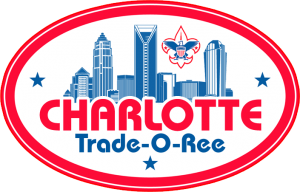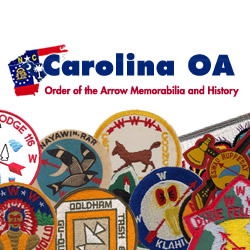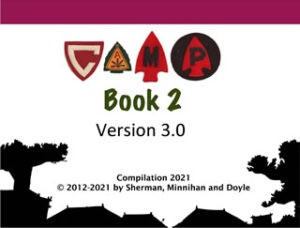How Do We Water the Patch Bug?
I have a question for the group but first a shout out is due. I received in the mail this week a draft copy of the SR-5 Pocket Flaps Guide being written by Hank Birdsong. Many of you who are from the Carolinas are already aware that Hank has created neat color booklets for issues from Tsali Lodge 134 and I believe Wahissa 118 as well. Well this time Hank is part of the host lodge for the 2011 Dixie Fellowship and he is going to hand out this new SR-5 guide to all attendees. That’s over 1000+ people by my count. The guide has miniaturized color scans of all SR-5 lodge flaps. Hank’s layout has about 24 flaps fitting on a 1/2 page with a checklist and Blue Book id next to each scan. By going through the book starting with Bob White #87 and finishing with Eswau Huppeday #560 you can see just about every flap that these lodges have ever produced. He teamed up with John Pannell and others to get the scans.
I think this is a great tool to get new traders interested in the hobby. It also might get some casual collectors to get a little more serious about filling the gaps and holes in their collections. I know that I went through it with one of my collections and identified a few flaps that I need.
So my question to the group is how are you watering the patch seed that was planted in thousands of boys at the 2010 Jamboree? Are you doing classes, giving away free patches, or in this case writing and distributing color checklists to get some fresh blood into this graying hobby of ours? Please respond to this thread with your ideas.








 Camp Director, Eagle Scout, Order of the Arrow Vigil Honor Member and past Chief, lifelong Scouter and patch collector.
Camp Director, Eagle Scout, Order of the Arrow Vigil Honor Member and past Chief, lifelong Scouter and patch collector.
Water the patch bug? Are you mixing metaphors there or is that a Southern expression?
I owned one of Bill Price’s OA flap handbooks and Jim Bowles’ CSP books back in the day and they were a great inspiration for me to send off letters to council offices and trade patches with others at conclaves. The pocket Blue Books should have done the same thing in recent times, but truthfully I haven’t seen an influx of young collectors as a result. I think the modern mindset of everything being a rare “collectible” (think Beanie Babies and Pokemon cards) and the presence of eBay where most everything can be found for only the effort of a few clicks have made Scout memorabilia collecting just one more diversion option for kids out there. While I have given training sessions at conclaves on patch design, patch trading and collecting, etc., I’ve been trying to promote and encourage the hobby by simply hosting a local trade-o-ree and bringing out my patches to trade at lodge events and conclaves. If people think they only need to buy stuff online, they’ll miss out on the personal interactions that make the hobby interesting. Real trading and negotiating. Funny stories. Just in time education on Scouting’s history and memorabilia. So basically it can be described as setting the example.